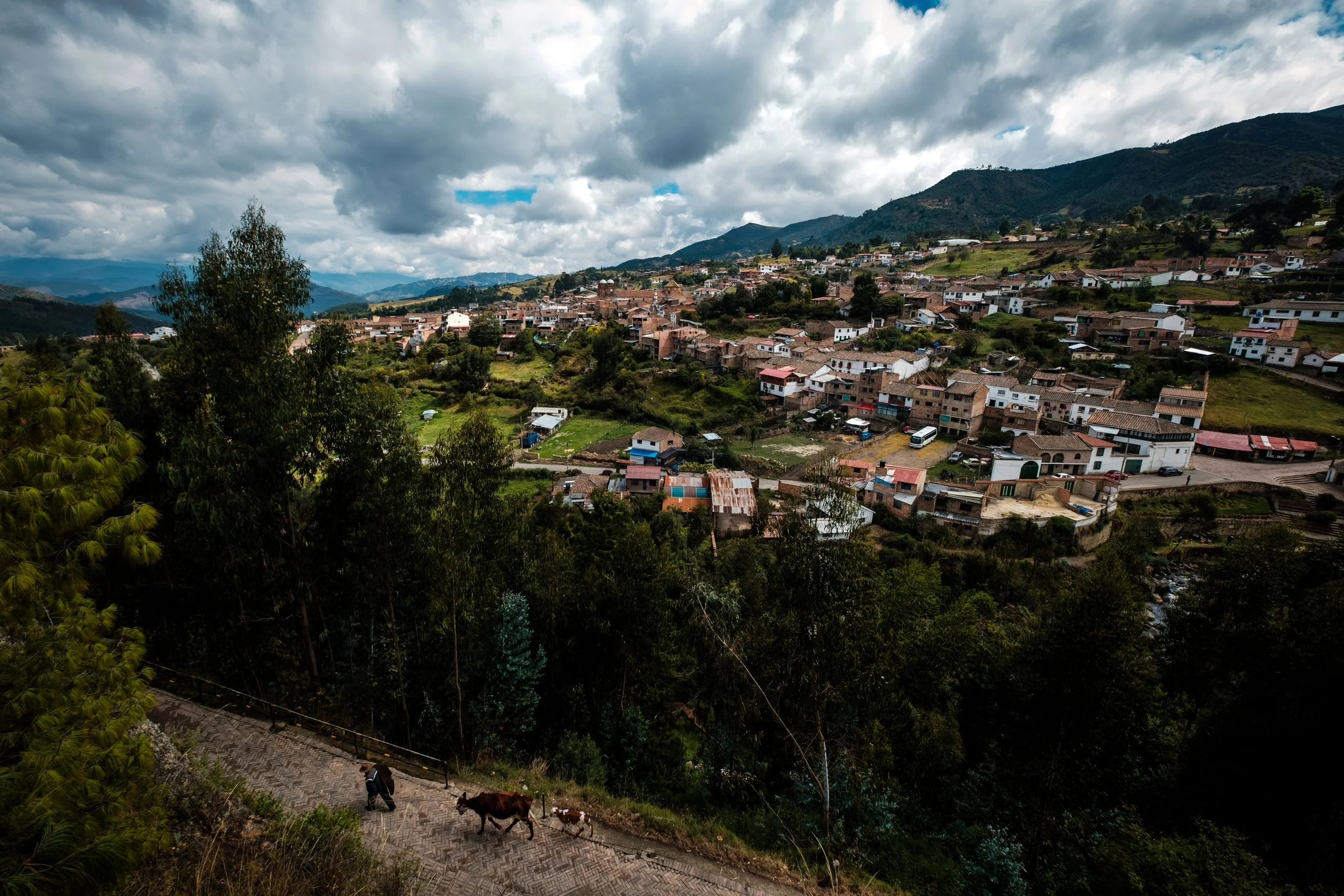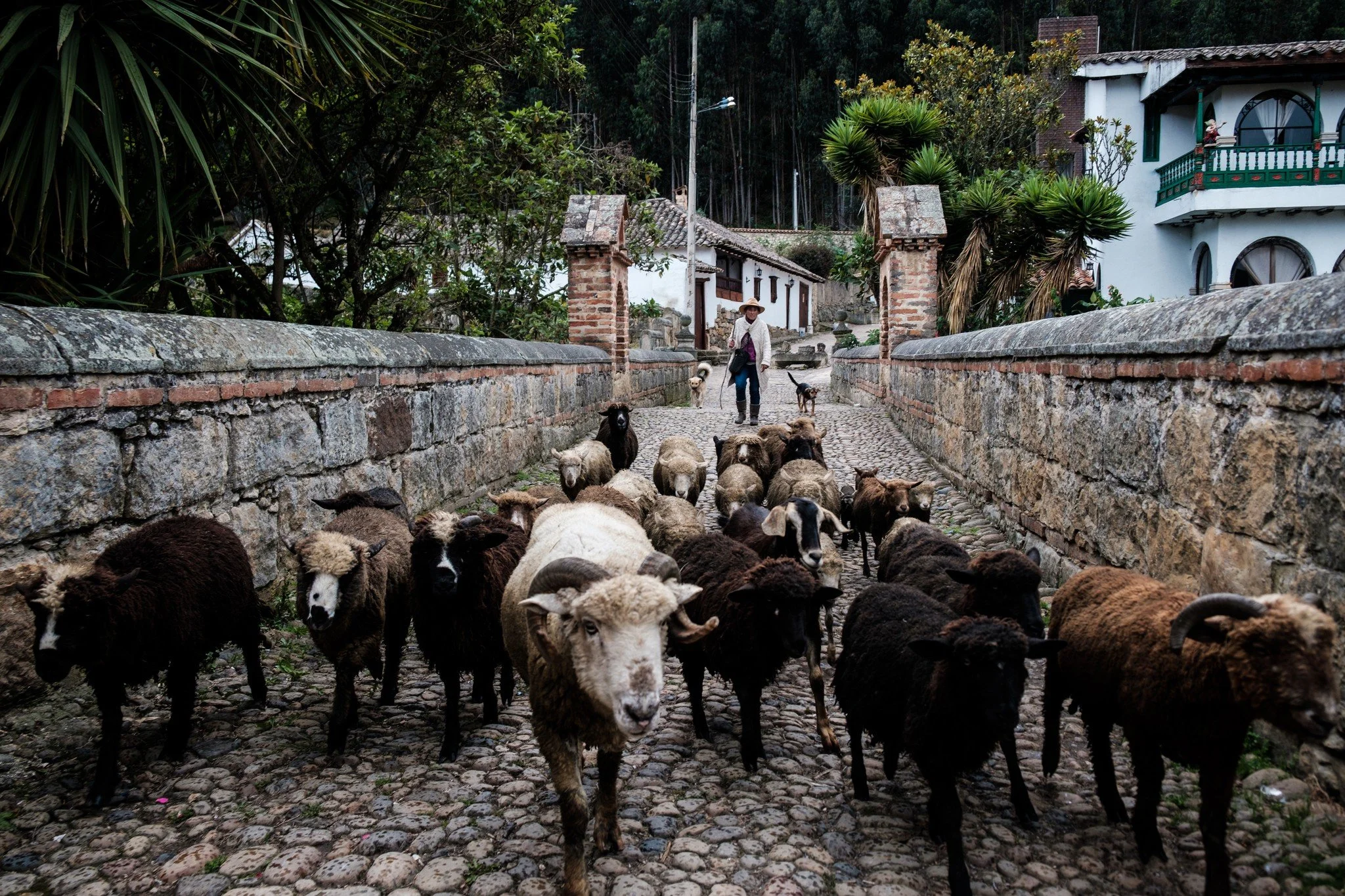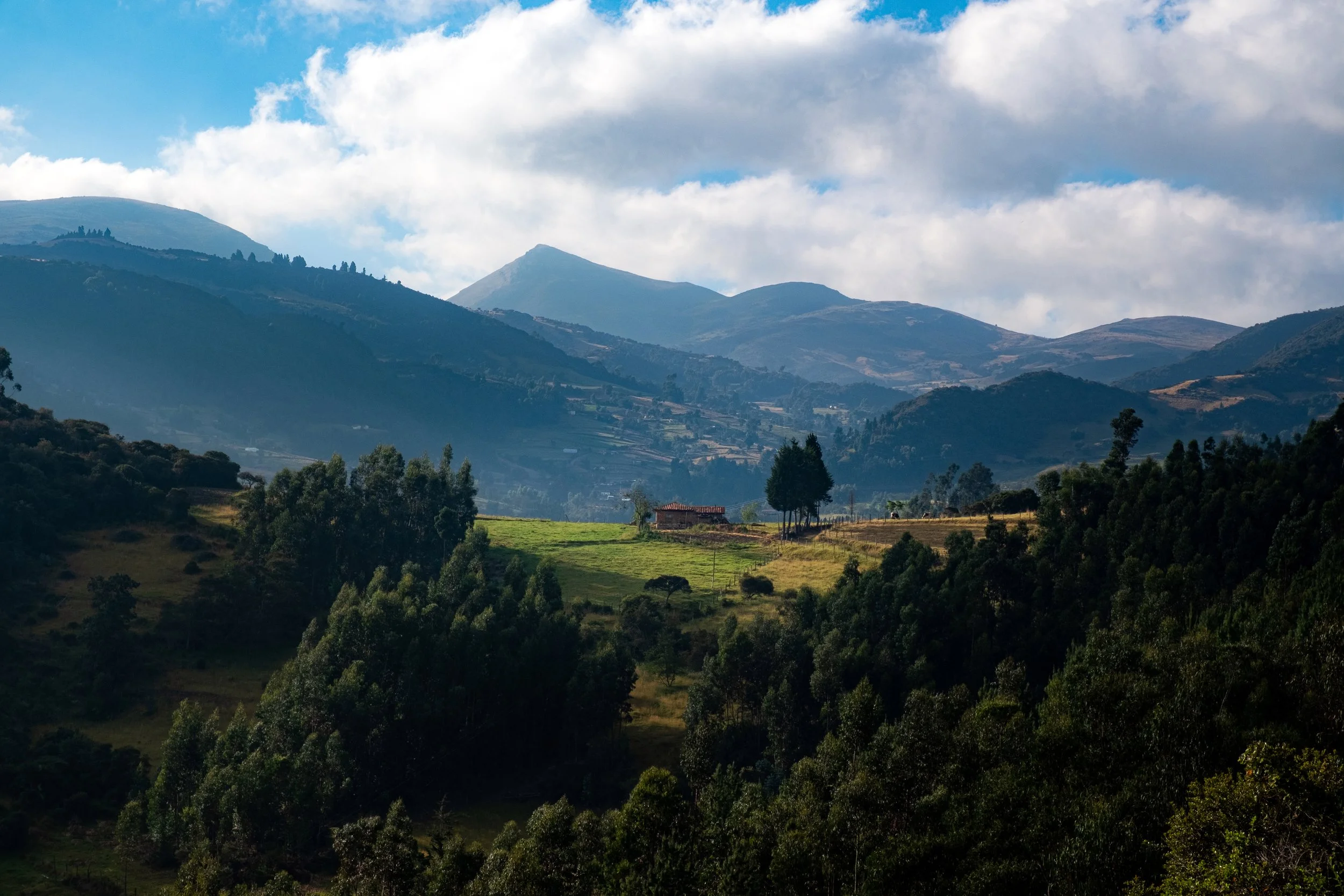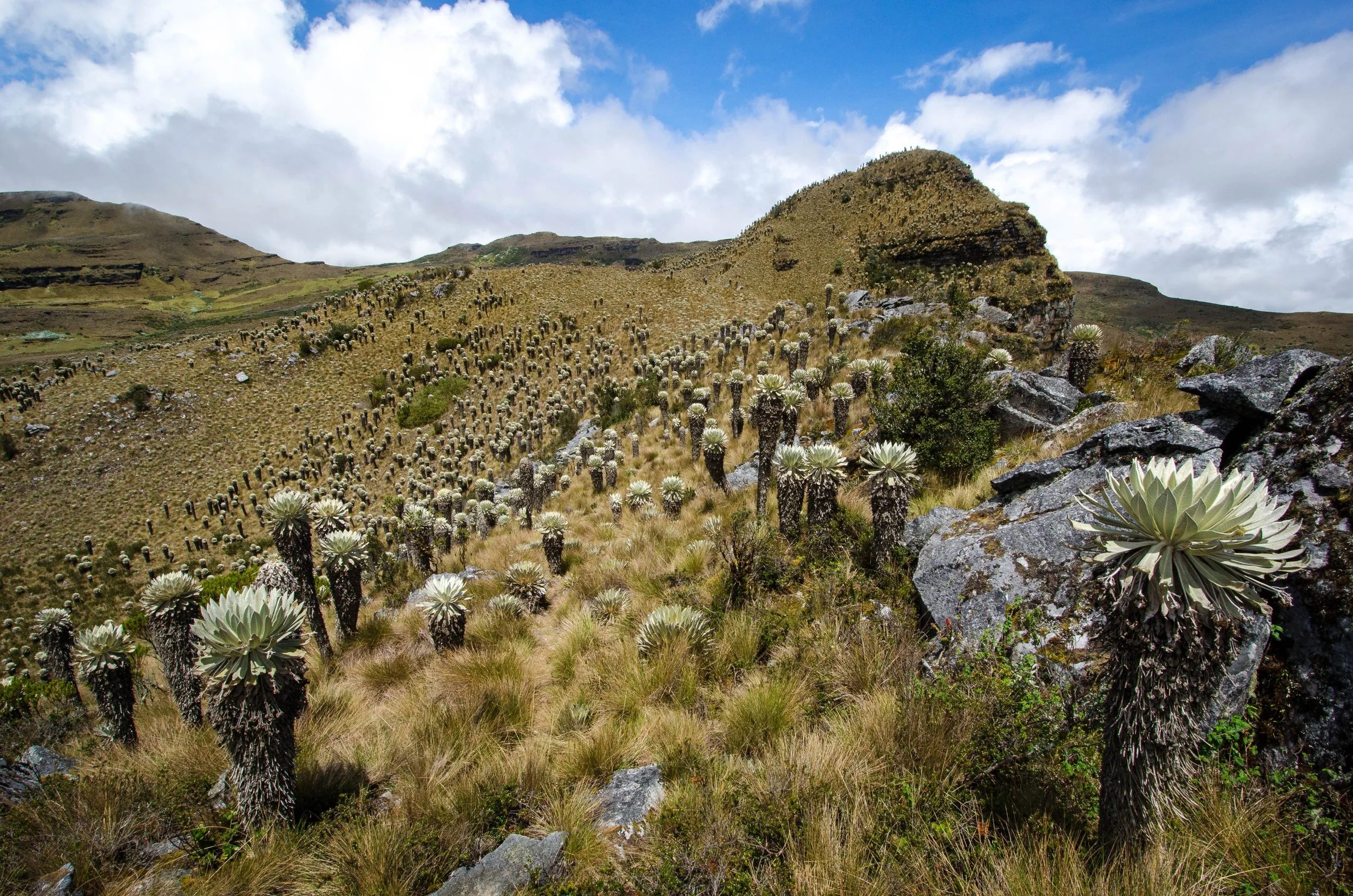
Monguí
Monguí - At a Glance
The picturesque town of Monguí is famous for its well-preserved cobblestone streets, whitewashed facades, and colonial architecture. As part of the Colombian Heritage Villages, Monguí has been voted “Most Beautiful Town of Boyacá” in recent years. The entire town has embraced a Christmas color palette, prominently featuring greens with vibrant red and gold accents. Monguí also serves as one of the entry point for Páramo Ocetá, a high-altitude ecosystem found in the northern Andes of Colombia. Beyond its historical allure, the town of Monguí is renowned for its mastery in crafting footballs, a tradition that began in 1930 and has earned the town recognition as the ‘Capital of Colombian Soccer Balls’.
Life at Altitude
Life in Monguí moves at a slower rhythm. In the mornings, farmers descend from the hills with sacks of potatoes and onions, filling the plaza with earthy scents. Children play soccer in the square, a nod to their town’s legacy. Festivals bring Monguí to life, especially the Fiesta de la Virgen de Monguí each July, when fireworks, processions, and music honor the town’s patron saint. In December, lanterns and lights transform the colonial streets into a glowing labyrinth.
Life at Altitude
To get to Mongui, most travelers pass through Sogamoso, then wind up into the mountains by bus or car. The road itself feels like a climb into history, each curve revealing a new valley or farmhouse perched precariously on the slopes. But once you arrive, the altitude and the crisp mountain air make every step feel grounded in something older, deeper.
Monguí isn’t a place you “do” in a day. It’s a place you wander, where you pause on a cobblestone street just to watch mist curl over the mountains, or sip a hot canelazo (spiced sugarcane liquor with cinnamon) in a café while bells ring from the basilica.
Pre-Colonial History
The town’s name "Monguí" is rooted in the Chibcha language, spoken by the Muisca people who inhabited the region before Spanish colonization. It translates as “The Wife’s Bath,” although the exact meaning has variations. In pre-colonial times, the town was inhabited by the Monguíes, and the region was also home to the Samoes or Sancas tribe. In 1555, the Franciscan missionaries arrived to evangelize the indigenous population which began the onset of Christianization in Monguí.
Páramo de Ocetá
Colombia is home to 40% of the world’s páramos, with Páramo de Ocetá being widely regarded as the most beautiful. Páramos are characterized by its unique ecosystem, which includes Andean grasslands, mosses, and frailejónes plants. Frailejónes are a type of evergreen plant endemic to the Andean highlands, known for their distinctive appearance with tall stems and rosettes of leaves. They grow less than a centimeter per year and can live for hundreds of years. Páramos serve as a vital water source for surrounding communities and supports a diverse range of flora and fauna, including endemic species found only in this region. Due to its ecological significance and rich biodiversity, the Páramo de Ocetá is protected as a natural reserve in Monguí. It attracts visitors for its stunning landscapes, hiking opportunities, and the chance to experience the unique Andean ecosystem up close.
The Basilica and Convent
The Basilica of Our Lady of Monguí, constructed between 1694 and 1760, stands as a testament to the town's religious heritage. This Romanesque-style church houses the revered image of the Virgin Mary and features works by the renowned painter Gregorio Vasquez de Arce y Ceballos. The Basilica is a significant cultural and religious landmark, drawing pilgrims from far and wide.
The stones used for the construction of the church and convent were transported across El Puente Calicanto, a famous bridge and historical monument crossing the Morro River. Built by the Spaniards, the masonry of the bridge was made from a mixture of lime, sand, molasses and beef blood.
Páramo de Ocetá
Beyond its cobbled streets and artisan workshops, Monguí guards a natural treasure: the Páramo de Ocetá, often called the most beautiful páramo in the world. Colombia is home to nearly 40% of the planet’s páramos—high-altitude ecosystems found only in a handful of countries. These landscapes are defined by Andean grasslands, mosses, and the iconic frailejones: evergreen plants with tall stems and rosettes of velvety leaves. Growing less than a centimeter per year, frailejones can live for centuries, quietly absorbing mist and rain to release water into rivers below.
Páramos act as natural water reservoirs for surrounding communities and shelter an astonishing range of flora and fauna, including species found nowhere else on earth. Because of this ecological significance, the Páramo de Ocetá is protected as a natural reserve. For visitors, it offers more than a hike; it’s an immersion into an otherworldly ecosystem. Walking among towering frailejones feels like stepping into a landscape part tundra, part enchanted garden, where condors circle overhead and clouds drift across the ridges like tides. Ocetá is not just scenery—it’s a living reminder of how fragile and essential these highland worlds are to Colombia’s future.








